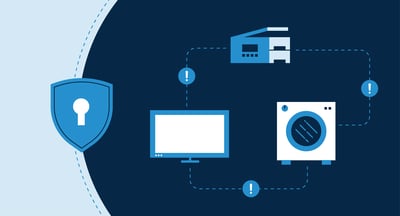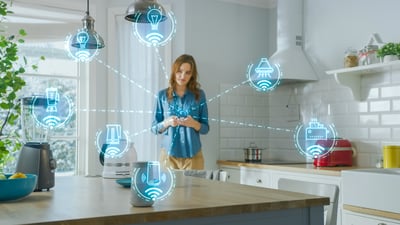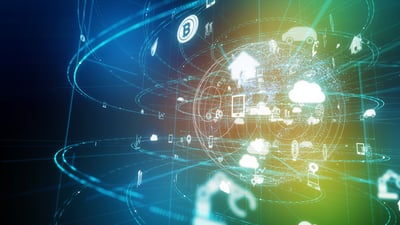

What are these “things,” and why do they need the internet?
If you’ve hung around the tech scene lately, it’s likely you’ve come across an article or two talking about the internet of things, also known as IoT.
The internet of things may be a trending tech topic right now, but in the near future, IoT will have a significant impact on our everyday lives – even if we’re not fully aware of it.
Let’s dive into IoT, what it encompasses, and the ways it’ll change the world around us.
From your grandpa’s smartwatch to the neighbor’s dog collar, everyone and anything with an internet-connected device will contribute to the internet of things. But what exactly does this mean?
There are two components to the internet of things. The first is a physical “thing,” such as a vehicle, door lock, hearing aids – you get the gist. The second is an embedded device that connects your physical “thing” to the internet, like a sensor, a piece of software, an actuator, or connectivity. Pair the two components and, voila, you now have an IoT device that is sharing a variety of big data.
The purpose of connecting a physical device to the internet varies from one business to another. In the manufacturing industry, a business may monitor data from internet-connected factory equipment to detect potential breakdowns before they occur. In healthcare, patients can share the data from their wearable devices, like a smartwatch, with their healthcare providers for fast, more personalized care.
Not long ago, the internet was primarily an information hub. Now, we’re connecting “things” to the internet in ways we would have never imagined. Businesses are gathering data on everything from consumers to machines and applying this data in a variety of ways. So, let’s backtrack and see how we got to this point of mass connectivity.
Because the commercial internet has really only been around since 1995, IoT doesn’t necessarily have the most robust history. However, there’s still an interesting story on how the internet of things came about.
British tech startup pioneer Kevin Ashton first coined the term “internet of things” in 1999 in a presentation to Procter & Gamble regarding supply chain management. Ashton pitched the idea of connecting machinery through something called radio frequency identification, or RFID.
“Information technology is so dependent on data originated by people, that our computers know more about ideas than things,” said Ashton. “If we had computers that knew everything there was to know about things – using data they gathered without any help from us – we would be able to track and count everything, and greatly reduce waste, loss, and cost.”
Connecting “things” to the internet? While this concept may have seemed overly ambitious in 1999, Ashton was definitely on to something.
Just a year later, LG introduced the world’s first internet-connected refrigerator, featuring a LAN (local-area network) port for internet connectivity. The refrigerator itself may have faded into obscurity, but this marked one of the first times a company, rather than researchers, took an interest in IoT capabilities.
In 2010, China became the first nation to call IoT a “key industry” for growth and future opportunities. This prompted enterprises like Cisco, IBM, and Ericsson to produce massive amounts of marketing and educational materials around the subject.
The internet of things had officially launched into the mainstream. But as floppy disks turned to cloud computing and cord phones turned to smartphones, we sort of forgot about Ashton’s projection over two decades ago. Now, everything from watches to televisions are internet-connected, and there are practically no limits on which devices are next to come.
If you’re trying to cut down on your mobile phone usage, I have some unfortunate news. By 2021, the average North American is expected to own around 13 internet-connected devices. Technology has become forever entwined in our society and will have an even larger impact in just a few years.
Physical devices like mobile phones, laptops, tablets, smart watches, smart televisions, and others have become regular IoT contributors. Less obvious physical “things” like electric outlets, pet feeders, and even mirrors will be connected in the age of IoT.
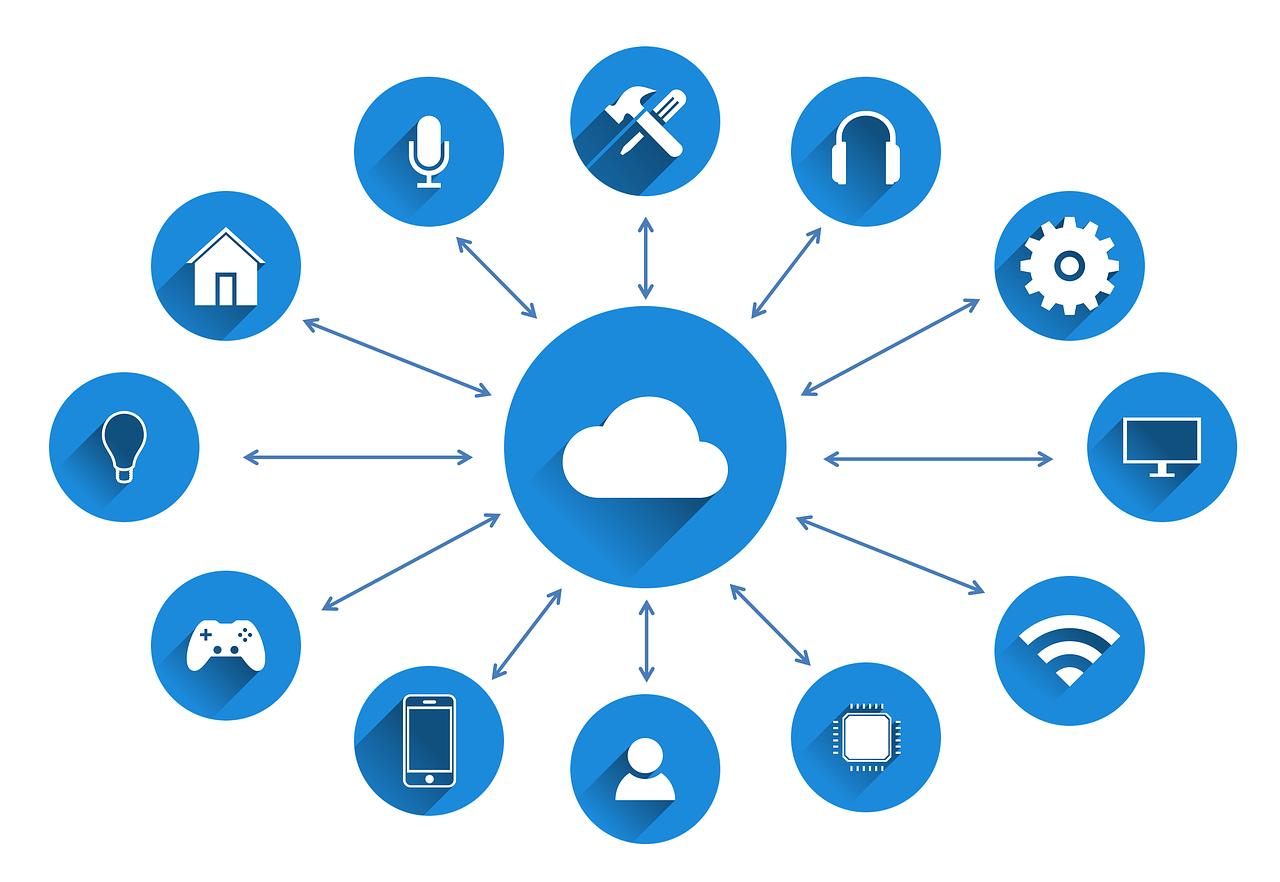
Utilizing these devices isn’t as simple as connecting and forgetting. Relaying data from sensors requires a certain amount of processing power, range, bandwidth, and more. The health of embedded devices will also need to be monitored.
Let’s not forget that IoT devices generate a substantial amount of unstructured data – which is why IoT is the main driver of the expanding big data universe. Unstructured data, which accounts for 80 percent of the datasphere, is currently difficult for big data programs to process and analyze.
There’s also the issue of finding ways to store all this data generated by IoT devices. Edge computing has emerged as a possible solution. Instead of data being stored on the cloud or core network, it’s pushed to the “edge” of the network for quick access and preventing data overload.
When this real-time streaming data is distributed, IoT analytics software will be necessary to make sense of it all to achieve the desired outcomes from IoT.
Speaking of physical devices, wearable technology has been one of the more prominent contributors to the internet of things. In 2017, 115 million wearable devices were purchased worldwide – a 10.3 percent increase from 2016. This number will continue to spike upwards as new wearable ideas come to light and the IoT ecosystem grows.
Smart watches may pop into your head when thinking of wearables. Consumers can use these devices to monitor everything from heart rate to blood-glucose levels, and then send that data to their physicians for real-time assessment.
Workout shirts and sports bras embedded with biometric sensors can provide in-depth breakdowns of your workouts, calorie losses, body mass index readings, and more. These nearly invisible sensors can even track UV levels and changes in the weather. But wearables also have purposes outside the health and fitness industries.
Baseball caps are being IoT-linked to assess the alertness of truck drivers and heavy machinery operators. “Micro-sleeps” can be detected by brain wave patterns, and the data is then monitored for safety purposes.
Ready for this wearable concept? Internet-connected smart contact lenses that allow the user to record videos or snap images, and then upload those files onto their laptop. This may sound outlandish, but companies like Sony, Google, and Samsung have already filed patents for lenses with these capabilities.
Human-to-device interaction includes more than just taps, swipes, and clicks on a mobile phone or wearable device. Conversational user interfaces, or CUI, will be an increasingly popular way to interact with internet-connected devices.
CUI is made possible through the use of chatbot technology. Remember that automated live chat feature you’ve interacted with on your favorite e-commerce website? That’s an example of chatbot technology at work.
With advances in natural language processing software and machine learning software, chatbots are steadily moving away from being text-based and more towards vocal-based. In 2017 alone, 58 percent of consumers conducted voice searches to gather more information about local businesses.
Here’s a basic voice search on behalf of Siri, a chatbot many of us know and love.

Artificial intelligence (AI) assistants like Alexa and Cortana have been empowered by IoT, and we can speak through them to control other internet-connected devices in our homes. You can now dim the lights, lock the front door, and turn on the heat without lifting a finger, thanks to CUI and this internet-connected ecosystem.
Chatbots will soon have an impact on our workplaces as well. Imagine being notified by an AI assistant that the printer ink is low, and then prompting that assistant to place an order for more cartridges. What if a piece of office equipment is down and the AI assistant automatically notifies your IT department? With an influx of more internet-connected devices, these scenarios aren’t farfetched.
While a smart city may sound like a setting for a sci-fi movie, there are actually many real-world examples of smart cities today. These cities leverage big data collection from a variety of sensors, and then apply that data to manage a city’s resources or improve the daily lives of its inhabitants. If you live in an urban area, there’s a good chance of it becoming “smart” in the near future.
Smart cities are powered by machine-to-machine, or M2M, interactions. These interactions occur without the need of a human intermediary and will be taken to the next level with the help of IoT. When machines become better at communicating with each other, the possibilities for internet-connected smart cities broaden.
M2M interactions have been going on for quite some time, but are typically part of stand-alone networks. For example, our traffic lights are controlled by M2M interactions. But aside from doing their pre-programmed tasks, traffic lights aren’t really smart.
Have you ever sat at a red light when there were absolutely no cars around? An IoT-based traffic light control system would be able to detect traffic congestion through a number of sensors and geospatial data – optimizing the driving experience in a more practical way.
Things like traffic flow optimization and open Wifi are happening today, but smart cities of the future will be completely glued together by internet-connectivity.
As AI continues to improve, public transit, cargo transport, and package delivery could be completely automated by machines in an smart building IoT ecosystem. Reduced carbon and NOx emissions will result from more efficient means of moving people and assets.
By 2030, the amount of global water consumption will increase by 40 percent! To prepare for this drastic uptick, predictive maintenance can be applied to water management systems throughout cities – identifying potentials for leaks, monitoring water flow, and even allowing homeowners to track their water usage in real-time.
Office buildings come to life through the internet of things. Energy output, temperature control, and facility maintenance can be closely tracked with embedded sensors. With the help of AI, an office administrator can see the real-time status of nearly every aspect of their building.
Living in a time where you can program your coffee maker through a smartwatch may sound neat, but this web of connectivity is bound to get tangled at some point. As more “things” become internet-connected, the security of these devices comes into question.
While everyday technologies like smartphones and laptops are typically very secure, newer IoT devices could have relatively weak out-of-box security features. This includes outdated operating systems, default passwords, and unpatched software.
When enough of these unsecured devices communicate with each other over a network, that could pose a serious security threat.
In 2013, a researcher at Proofpoint discovered a malicious botnet across many IoT devices, such as computers, smart televisions, and even baby monitors. What does a botnet do? It can send spam, steal data, and allow remote access to devices without the owner’s knowledge.
This was just a small-scale botnet, but imagine what could happen if smart city operations came under threat?
The obvious vulnerability of IoT devices has led to massive growth in the IoT security industry. By 2023, Juniper Research estimates IoT security efforts to reach $6 billion – a 300 percent growth from 2018.
There will also be growth within the semiconductor industry, or companies that develop things like microchips and processors. New IoT devices will require embedded technologies that are up-to-date and highly secure.
For now, security experts recommend users taking their own steps to secure their devices. This includes:
It may seem like we’re already living in a world that is dominated by internet connectivity, but research shows that we’re just barely scraping the surface. By 2021, the average U.S. consumer will interact with 601 internet connected devices every day. If this seems like a lot, that number is expected to reach 4,785 interactions by 2025 – an 800 percent increase!
While human-to-device interactions are increasing, M2M interactions are actually driving the growth of IoT. Cisco expects M2M interactions to reach at least 3.3 billion by 2021. Whether it’s predictive maintenance for a smart factory or traffic flow optimization of a smart city, we probably won’t be aware of these interactions – but they’ll still have an impact on our everyday lives.
Many industries will benefit from the internet of things. For example, investments in IoT for manufacturing will lead to smarter production. Everything from floor shop layouts and logistics to quality control and product flow management will be influenced in many ways by IoT, big data, and other emerging technologies.
Healthcare, transportation, utilities, and even the retail industry are devising their own IoT plans for the future. Just take a look at how much growth is expected over the next few years.
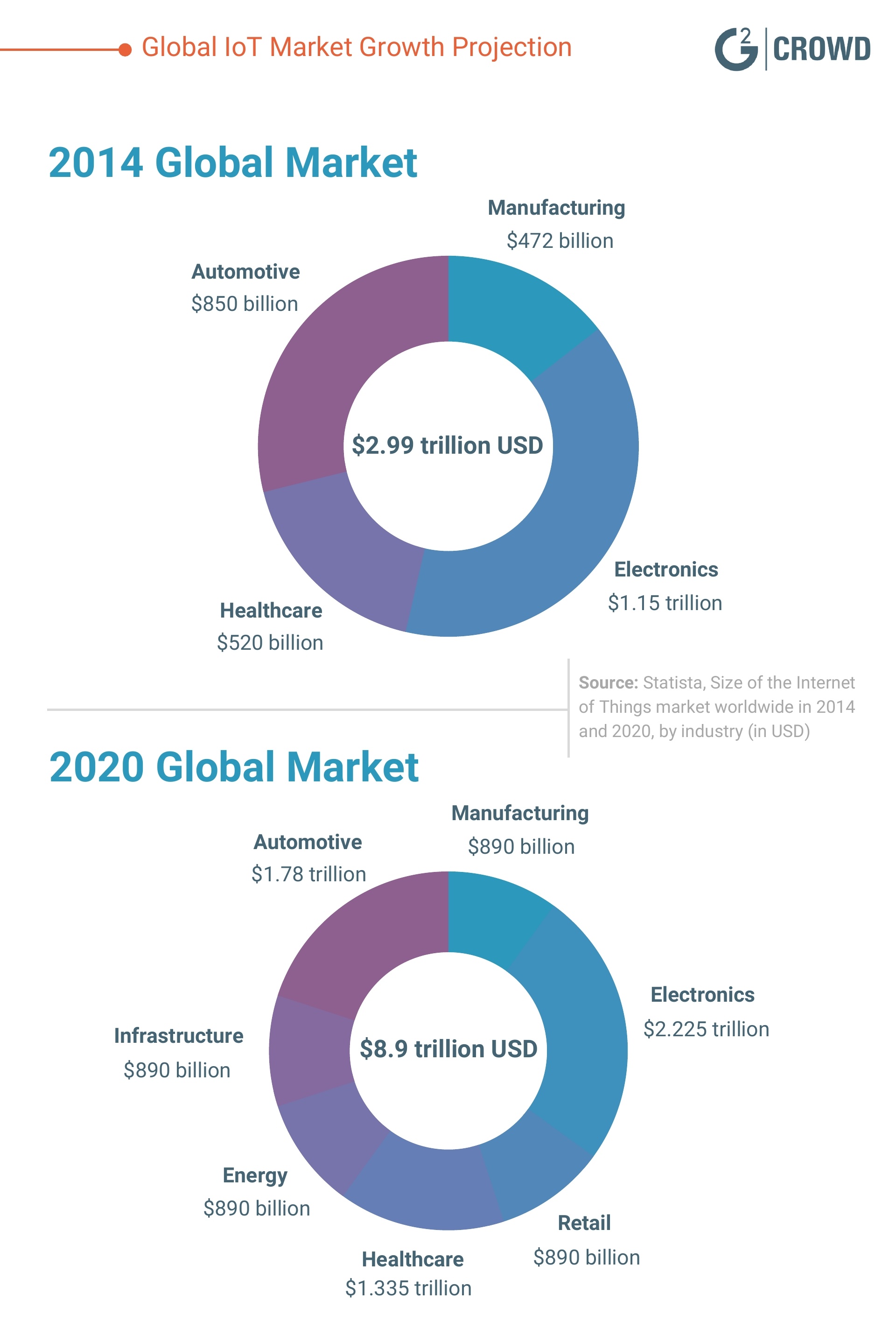
The global IoT market is projected to reach a staggering $8.9 trillion by 2020. When AI and machine learning are applied to more consumer-friendly IoT devices, these “things” will truly become smart. Informed predictions will be made by the devices based on their user’s tendencies – removing the need for them to be programmed.
Of course, we can’t really discuss the future of IoT without mentioning how the emergence of 5G networks will come into play.
Does anyone here remember 2G or 3G cellular networks? What were once considered lightning-fast data transfer speeds are now archaic compared to 4G LTE, also known as the fourth generation network.
But 4G LTE is about to meet it’s maker. By 2020, the first 5G networks are expected to rollout in major metropolitan areas, and it will be a monumental moment for the internet of things. So what’s the deal with 5G?
The most obvious improvement is data transfer speeds. 5G networks are expected to be up to 10 times faster than 4G LTE. Chalk up this speed boost to extremely low-latency, or the time it takes to transfer and process data from one device to another. In a massive web of internet-connectivity, the seamless movement of data is crucial.
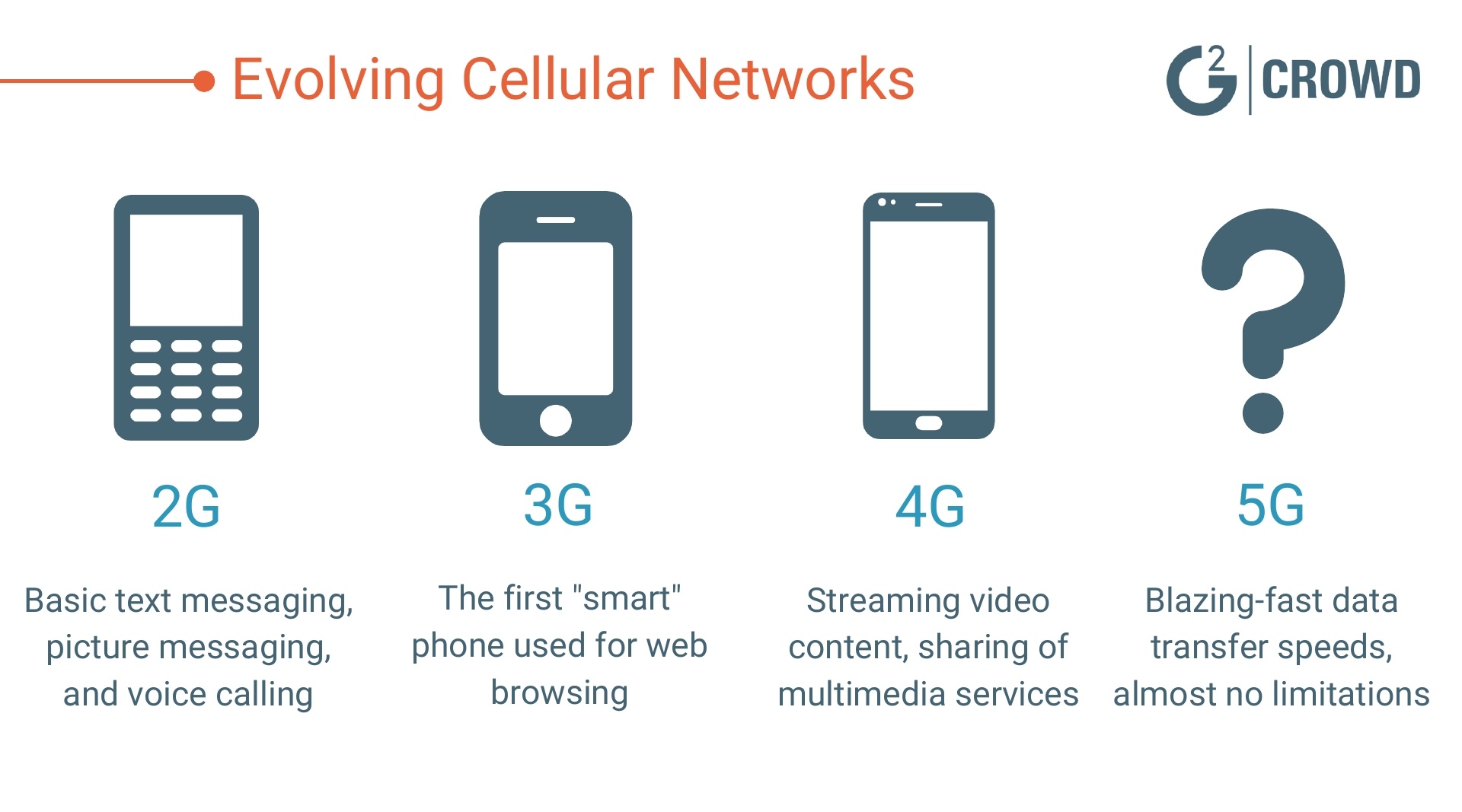
4G networks are simply limiting the effectiveness of our current IoT solutions. Once 5G emerges, worrying about latency will be a thing of the past. New concepts for IoT applications will move from the drawing board to production. As a matter of fact, the introduction of 5G is why Business Intelligence forecasts 22.5 billion new IoT devices to ship globally in 2021.
It’s here, it’s there, it’s everywhere. From smart homes and smart offices, to smart factories and smart cities, the internet of things will serve as the backbone of a fully connected world.
Mass productivity and efficiency will result from IoT, but it will also lead to the growth of existing industries and the emergence of new industries. 5G networks will revolutionize our current understanding of IoT, and devices will only continue to get smarter through the application of AI and machine learning.
On the other hand, making sure these devices are secure will be one of the greatest IoT challenges in the future. Organizations will have to make a concerted effort to ensure the data of every IoT user and machine are safe.
So, where do you stand on the internet of things? Some may be excited to see just how smart “things” can become, others could see IoT and this mass distribution of data as an invasion of privacy.
While most reactions are bound to run the gamut, we’ll just have to wait and see which IoT innovations come about and how they’ll change our everyday lives.
The Internet of Things is often confused with digital ecosystems. Read about what a digital ecosystem is on the G2 Learn Hub.
Devin is a former senior content specialist at G2. Prior to G2, he helped scale early-stage startups out of Chicago's booming tech scene. Outside of work, he enjoys watching his beloved Cubs, playing baseball, and gaming. (he/him/his)
Internet of Things (IoT) solves pressing business problems but often poses concerning...
 by Sagar Joshi
by Sagar Joshi
IoT devices allow us to take internet connectivity wherever we go. There are thousands of...
 by Nahla Davies
by Nahla Davies
Like many other high tech advancements, IoT is at the forefront of innovation.
 by Rebecca Reynoso
by Rebecca Reynoso
Internet of Things (IoT) solves pressing business problems but often poses concerning...
 by Sagar Joshi
by Sagar Joshi
IoT devices allow us to take internet connectivity wherever we go. There are thousands of...
 by Nahla Davies
by Nahla Davies
Never miss a post.
Subscribe to keep your fingers on the tech pulse.

